The OGLE View of Microlensing towards the Magellanic Clouds
III. Ruling out sub-solar MACHOs with the OGLE-III LMC data.
In the third part of the series presenting OGLE's microlensing studies of hypothetical compact dark matter halo objects towards the Magellanic Cloud we present results obtained with OGLE-III LMC data from years 2001-2009.
Among 35 million objects spread over 40 square degrees we found two candidates using our automated search pipeline. This yields the optical depth of 0.16±0.12×10e-7. If both events were due to Macho the fraction of mass of compact dark matter objects in the Galactic halo would be 3±2% and the mean mass of the MACHO would be around 0.2 MSun.
However, the more likely explanation of our detections does not require dark matter compact objects at all and rely on natural effect of self-lensing of LMC stars by lenses from the LMC. We place an upper limit on MACHOs in such scenario of f<7% for sub-solar mass range, with minimum of f<4% at M=0.1MSun.
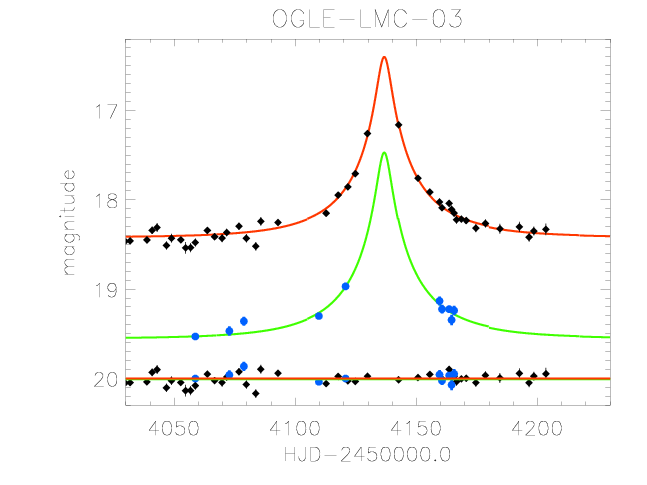
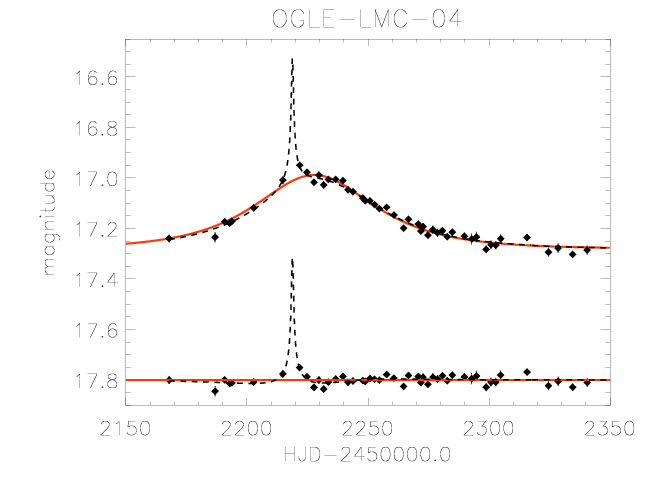
Figures show two events detected automatically in the OGLE-III LMC data along with the best microlensing models (solid line for standard model, dashed line for binary source). Black dots are for OGLE I-band, blue for OGLE V.
Apart from these two events, we visually found two additional ones, which did not pass the automated search pipeline due to their faint magnitude or non-standard light curve.
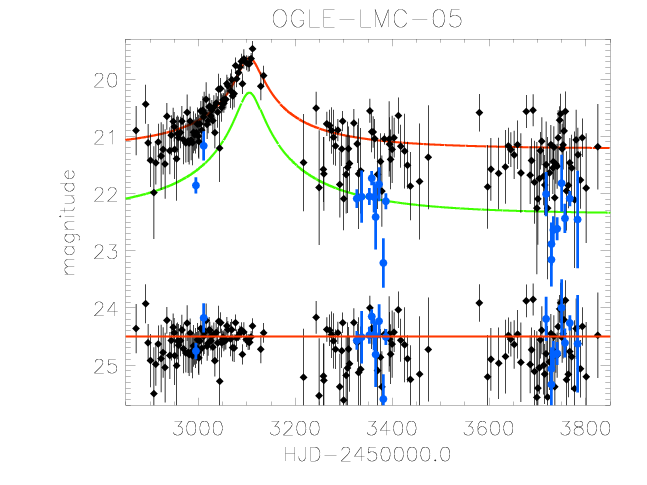
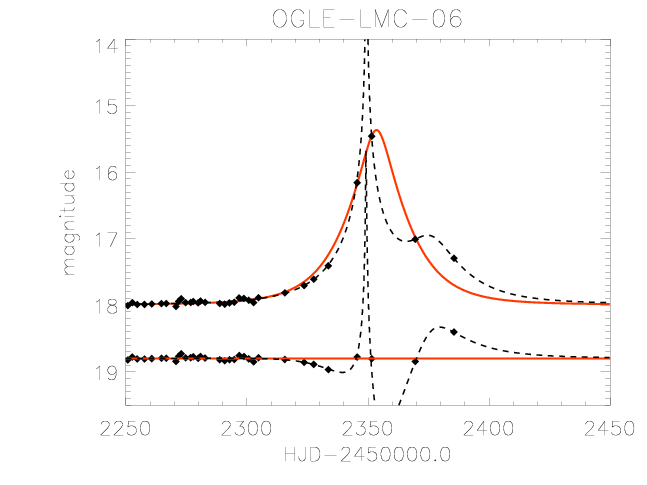
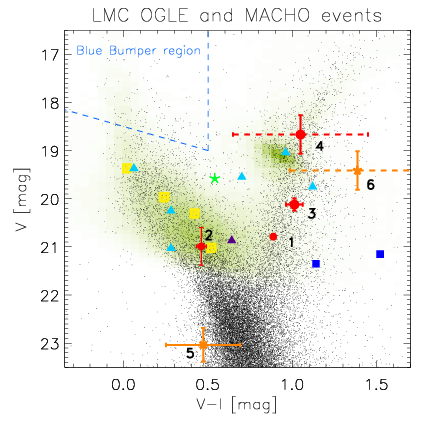
Color-magnitude diagram of the LMC100.1 field from OGLE (green background) and HST (black dots). Source stars of the OGLE LMC events are marked with the red dots and numbers. Remaining symbols denote MACHO events: dark blue are the confirmed thick disk lenses, yellow are the candidates for self-lensing (Mancini et al. 2004), green stars is for the only binary lens event and blue. Violet triangle marks MACHO-LMC-7 event, which we found exhibiting additional brightening episodes.
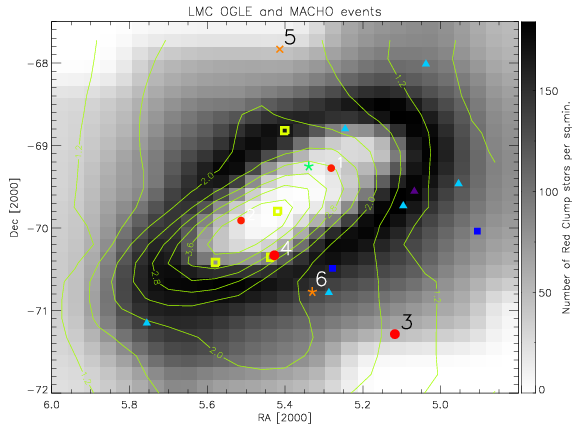
Positions of the OGLE and MACHO events on the Red Clump density map.
Most OGLE events originate from the region of high self-lensing (yellow
contour shows expected tau_SL from Mancini 2004).
We also found that one of candidate events discovered by MACHO (MACHO-LMC-7) exhibited additional brightening episodes visible in OGLE-III data. This shows this is not a genuine microlensing event and that MACHO's optical depth calculation should decrease by 10%.
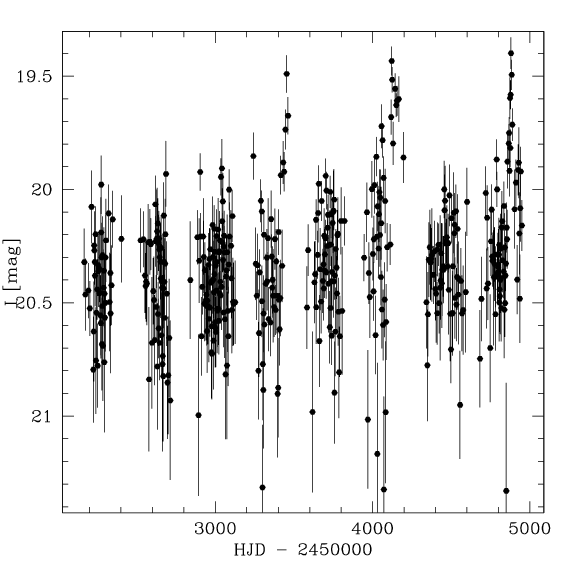
OGLE I-band data for MACHO-LMC-7 event showing three additional bumps in the light curve.
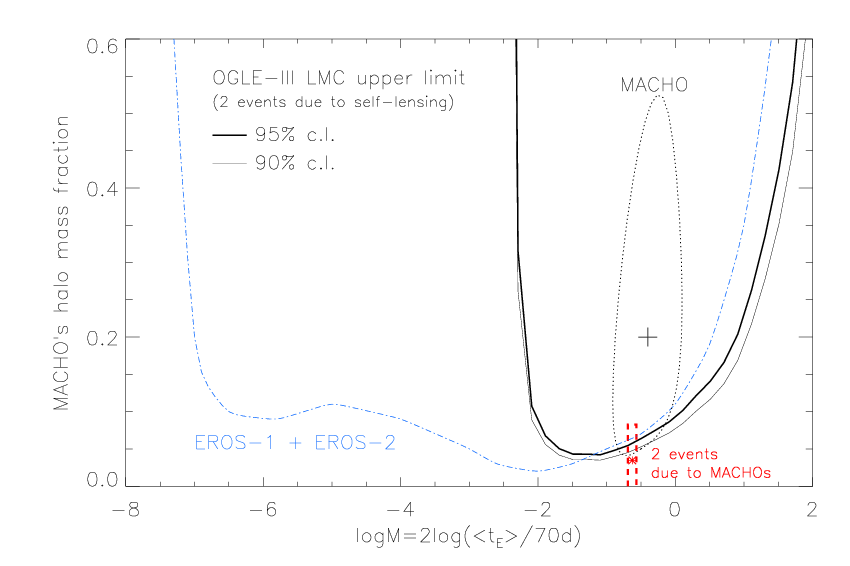
Limit on the MACHO mass fraction in the halo as a function of MACHO mass derived assuming two events found in OGLE-III are due to self-lensing (solid black curves). If the events are both due to MACHOs that would mean MACHOs do not contribute to the mass of the halo more than 3 per cent (red box).
The data, including light curves of events and efficiency curves, is available in
the OGLE Internet archive or
here.
PLEASE cite the following paper when using the data or referring to
these OGLE results:
Wyrzykowski et al., 2011,
MNRAS, in press
(astro-ph/1012.1154)
Any comments about the results, the data and the form of their presentation are welcome.
Send your messages to this address.
 back
back